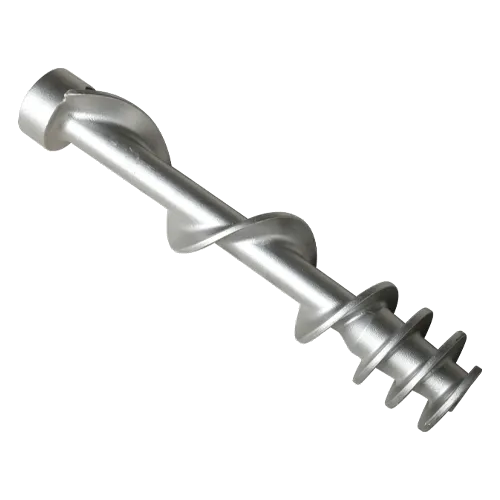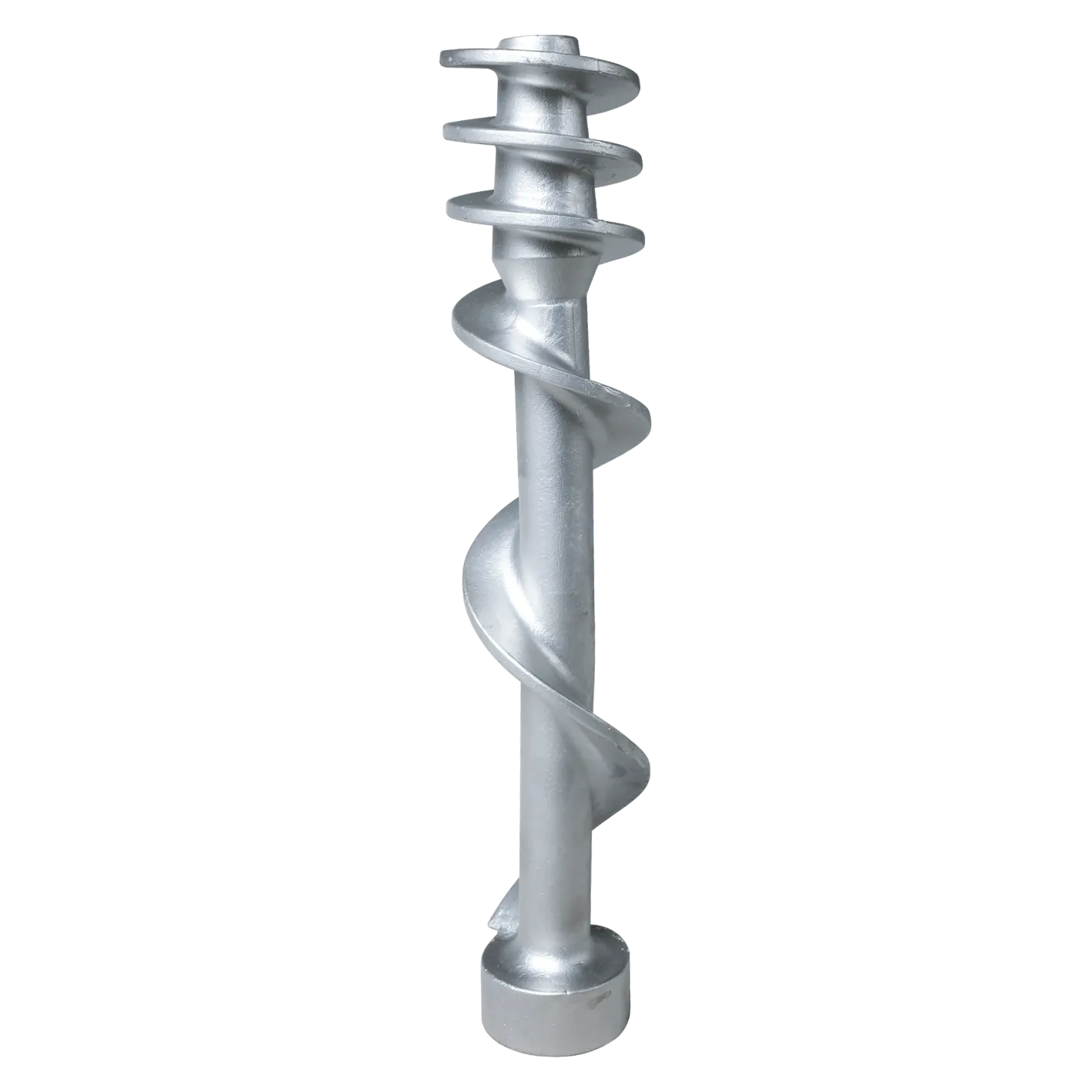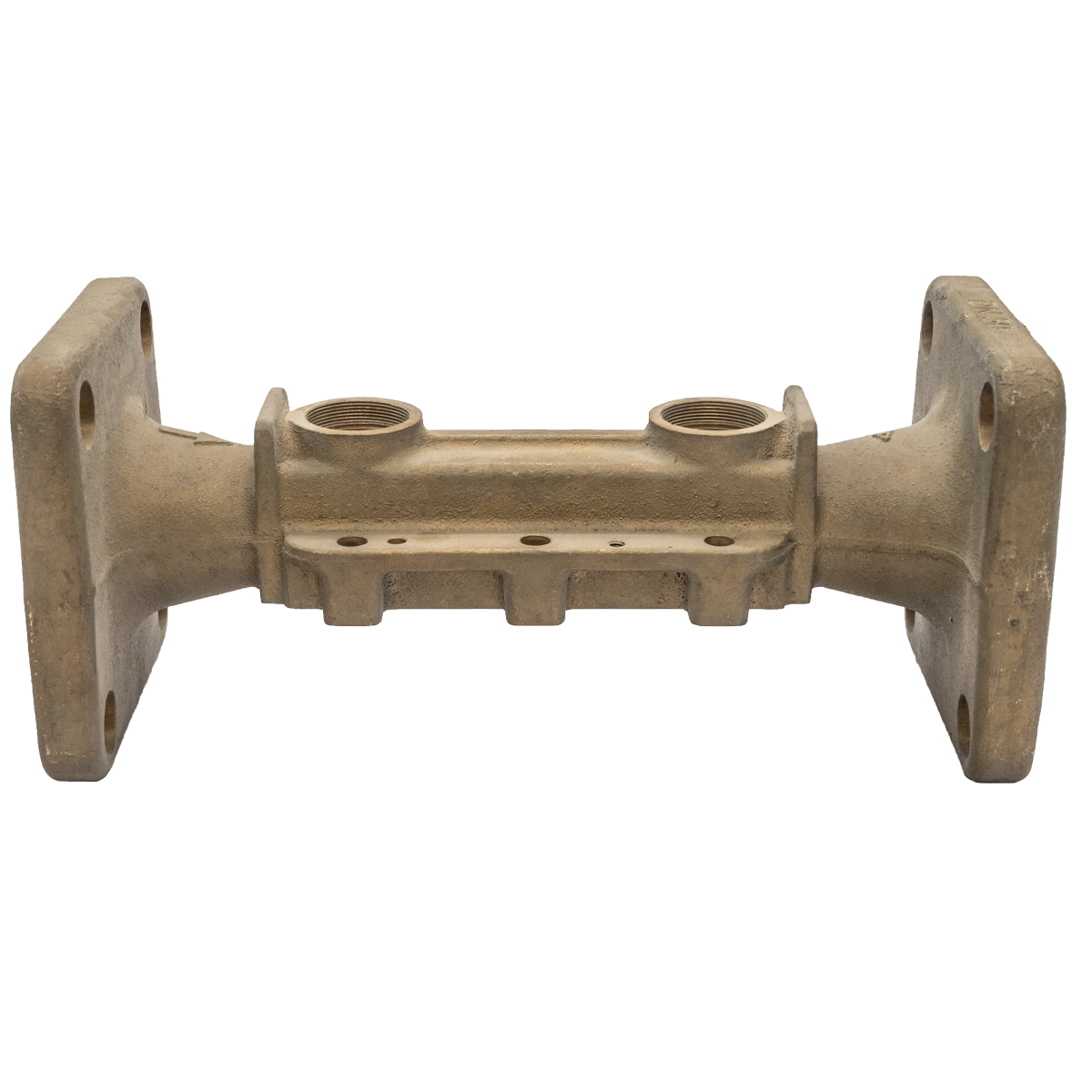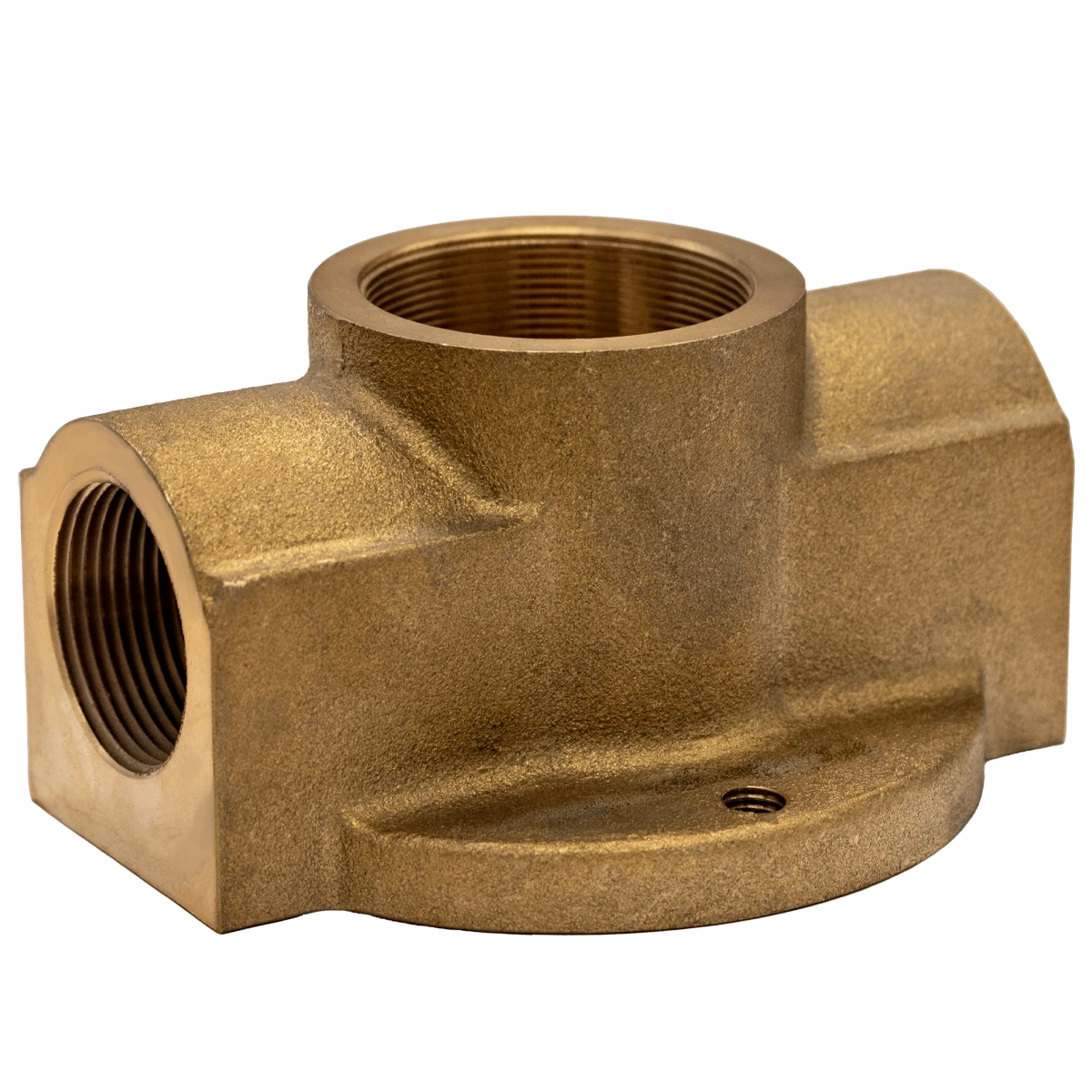Mobile:+86-311-808-126-83
Email:info@ydcastings.com
English
Precision Stainless Steel Casting | Custom Metal Parts
The Strategic Advantage of stainless steel casting in Modern Industries
In the evolving landscape of industrial manufacturing, the demand for components that offer exceptional durability, corrosion resistance, and precision has never been higher. Among various metal forming processes, stainless steel casting stands out as a superior method for producing complex parts that meet rigorous performance standards. This sophisticated technique is particularly vital in sectors like food processing, petrochemicals, aerospace, and medical devices, where material integrity directly impacts operational safety and product longevity. Unlike alternative methods such as traditional forging or simple machining, investment casting of stainless steel allows for intricate geometries, thin walls, and superior surface finishes directly from the mold, significantly reducing the need for costly secondary machining operations. The process leverages the inherent properties of stainless steel alloys, which are known for their high chromium content, providing an invisible, passive layer that resists oxidation and corrosive agents. This resistance is crucial in environments exposed to moisture, chemicals, or extreme temperatures, ensuring a long operational life and reduced maintenance downtime. The continuous advancements in foundry technology, including improved simulation software and advanced pouring techniques, are further enhancing the capabilities and cost-effectiveness of stainless steel casting, making it a cornerstone for high-performance component fabrication globally.
Beyond its inherent material advantages, the strategic adoption of stainless steel casting is driven by compelling industry trends favoring sustainable manufacturing and optimized supply chains. The ability to produce near-net-shape components minimizes material waste, aligning with environmental regulations and corporate sustainability initiatives. Furthermore, the robust nature of cast stainless steel parts contributes to the overall reliability of machinery, reducing breakdowns and extending service intervals, which translates into significant operational savings for end-users. The precision afforded by investment casting means tighter tolerances can be achieved consistently, critical for assemblies where fit and function are paramount. This precision also enables the creation of lighter, yet stronger, components, contributing to energy efficiency in applications such as pumps and valves. Companies increasingly seek partners capable of delivering not just parts, but comprehensive solutions that integrate design for manufacturability (DFM) principles, leveraging the full potential of stainless steel casting to optimize performance, cost, and lead times. This holistic approach ensures that components like Food Machinery Accessories are not merely parts, but engineered solutions designed for peak performance in demanding applications, setting a benchmark for quality and reliability in the global industrial landscape.
Unpacking the Stainless Steel Casting Process and Its Technical Parameters
The production of high-quality stainless steel casting components primarily relies on the investment casting process, also known as the "lost wax" method, due to its ability to produce complex, near-net-shape parts with excellent surface finish and dimensional accuracy. This intricate process begins with the creation of a wax pattern, which is an exact replica of the final part. These patterns are then assembled onto a central wax sprue to form a "tree." Subsequently, this wax assembly is repeatedly dipped into a ceramic slurry and then coated with refractory stucco, building up multiple layers to form a robust ceramic shell. Once the shell is cured and dried, it is dewaxed in an autoclave, melting out the wax and leaving behind a hollow ceramic mold. This mold is then preheated to high temperatures to remove any residual moisture and ensure a smooth flow of molten metal. Molten stainless steel, often specific grades like 304, 316, 17-4PH, or duplex stainless steels, is then poured into the hot ceramic mold. The choice of alloy depends critically on the intended application, factoring in requirements for corrosion resistance, strength, heat resistance, and machinability. For instance, 316L stainless steel is frequently specified for Food Machinery Accessories due to its superior resistance to chlorides, making it ideal for environments involving cleaning agents and acidic foods, unlike standard 304 stainless steel.
After solidification and cooling, the ceramic shell is mechanically removed through processes like vibratory hammering, water jetting, or chemical dissolution, revealing the raw castings. These castings are then separated from the sprue, and subsequent post-processing steps such as gate grinding, heat treatment (e.g., solution annealing, precipitation hardening for 17-4PH), and various finishing operations like polishing, sandblasting, or passivation are performed. Rigorous quality control is maintained throughout the entire process, adhering to international standards like ISO 9001 and ANSI specifications. Key technical parameters meticulously monitored include chemical composition analysis (using spectrometry), mechanical properties testing (tensile strength, yield strength, elongation, hardness), dimensional inspections (using CMMs), and non-destructive testing (NDT) methods such as liquid penetrant inspection (LPI), magnetic particle inspection (MPI), or X-ray radiography to detect internal flaws. These stringent checks ensure that each stainless steel casting meets precise specifications, offering a typical service life exceeding several decades under normal operating conditions. This robust manufacturing and inspection framework underlines why stainless steel castings are preferred for critical applications in industries ranging from petrochemicals, where components must withstand aggressive chemicals, to metallurgy, where parts endure high temperatures and wear, and water treatment where resistance to corrosion and biofouling is paramount.

Applications and Comparative Advantages of Stainless Steel Casting
The versatility and superior properties of stainless steel casting make it indispensable across a myriad of demanding industries. In the food processing sector, cast stainless steel components, such as valve bodies, pump housings, and conveyor system parts, are critical. These parts, including our Food Machinery Accessories, must meet stringent FDA compliance standards for hygiene and corrosion resistance against cleaning chemicals and various food acids, ensuring product purity and equipment longevity. Similarly, in petrochemical applications, cast stainless steel parts are essential for handling corrosive fluids, high pressures, and extreme temperatures found in refining and chemical processing plants. Components like impellers, fittings, and flanges benefit from the material's inherent strength and resistance to stress corrosion cracking, which is a common failure mode in less robust materials. For water treatment and general fluid handling, pump components and valve parts cast from stainless steel offer excellent resistance to fresh and saltwater environments, preventing rust and degradation that could compromise system integrity and efficiency. Furthermore, in general manufacturing, these castings are vital for precision tools, robotics, and automation equipment, where dimensional stability and wear resistance are paramount. The ability of investment casting to produce intricate geometries with minimal post-processing costs makes it highly competitive against other manufacturing methods like machining from solid bar stock, especially for complex designs.
When comparing stainless steel casting with other common metal casting methods, its distinct advantages become clear. While aluminum die casting is excellent for lightweight, high-volume production of intricate aluminum parts, it lacks the superior strength, heat resistance, and corrosion resistance of stainless steel, making it unsuitable for high-stress or corrosive environments. Green sand metal casting is a cost-effective method for larger, less complex parts and has a faster production cycle, but it typically results in rougher surface finishes, lower dimensional accuracy, and limited capability for intricate designs compared to investment casting. This often necessitates significant post-machining. The term aluminum casting die refers to the tooling used in die casting, emphasizing the method's reliance on durable dies for high-volume production. In contrast, investment casting, while potentially having higher initial tooling costs for molds (wax patterns are expendable), delivers a superior final product that often requires little to no machining, thus reducing overall part cost for complex geometries. The higher upfront cost for investment casting tooling is often offset by reduced material waste, superior part integrity, and minimal post-processing. For complex metal castings requiring high precision, structural integrity, and resistance to harsh conditions, stainless steel investment casting consistently outperforms other methods by delivering components that contribute to energy efficiency (due to smoother flow paths in pumps/valves) and superior corrosion protection, significantly extending the operational life of critical equipment.
| Feature | Stainless Steel Investment Casting | Aluminum Die Casting | Green Sand Metal Casting |
|---|---|---|---|
| Typical Materials | Stainless Steels (304, 316, 17-4PH, Duplex), Tool Steels | Aluminum Alloys (A380, A356), Zinc | Iron (Gray, Ductile), Steel, Aluminum |
| Complexity & Detail | High; Intricate geometries, thin walls, fine details | High; Good for complex parts with uniform wall thickness | Low to Medium; Simpler designs, thicker sections |
| Dimensional Accuracy | Excellent (±0.005 in/in) | Very Good (±0.003-0.005 in/in) | Fair (±0.020-0.050 in/in) |
| Surface Finish (RMS) | Very Good (63-125 RMS) | Good (63-125 RMS) | Fair (250-500 RMS) |
| Tooling Cost | Medium to High (for patterns) | High (for dies) | Low to Medium (for patterns) |
| Production Volume | Low to High | High | Medium to High |
| Post-Processing | Minimal (near-net-shape) | Moderate (trimming, deburring) | Significant (machining, surface finishing) |
Ensuring Authority and Trust in Stainless Steel Casting Solutions
For B2B decision-makers, choosing a stainless steel casting partner involves more than just evaluating technical specifications; it demands a deep dive into the manufacturer's authority and trustworthiness. Our commitment to excellence is underpinned by comprehensive industry certifications, including ISO 9001:2015, ensuring consistent quality management throughout all operational phases. Furthermore, for specialized applications such as Food Machinery Accessories, our processes adhere to strict FDA guidelines for material traceability and surface finish requirements, ensuring components are safe for direct food contact. Our extensive experience, spanning over two decades in the precision casting industry, is validated by long-standing partnerships with global OEMs in diverse sectors including automotive, aerospace, and general industrial machinery. These collaborations are built on a foundation of consistently delivering highly engineered solutions that meet or exceed performance expectations. We leverage state-of-the-art testing facilities, performing comprehensive chemical analysis, mechanical property verification, and non-destructive testing (NDT) such as ultrasonic testing (UT) and eddy current inspection, all supported by detailed material test reports (MTRs) for full traceability. Our rigorous in-house quality assurance protocols ensure that every single stainless steel casting component shipped meets the most demanding specifications and stands up to the harshest operating environments, providing our clients with unmatched reliability and peace of mind, thus enhancing our authority in the market.
Building trust with our clients extends beyond certifications and experience; it involves transparent communication, robust support mechanisms, and a clear commitment to customer satisfaction. We understand that project timelines are critical, and our optimized production planning allows for competitive delivery cycles, typically ranging from 4-6 weeks for new tooling and first article inspection, followed by 3-4 weeks for production runs, depending on complexity and order volume. Each stainless steel casting component comes with a comprehensive quality assurance warranty, covering material defects and manufacturing errors for a specified period, typically one year from delivery, or as agreed upon in custom contracts. Our dedicated customer support team is readily available to address any technical inquiries, offer post-sale assistance, and facilitate custom solution development. For example, a recent case involved a client in the wastewater treatment sector needing custom 316L stainless steel impellers that significantly reduced cavitation. Through collaborative design for manufacturability (DFM) and extensive flow simulations, we delivered components that improved pump efficiency by 15% and extended service life by 30%, validated by client operational data. This proactive problem-solving approach, coupled with our commitment to transparency and reliability, underscores our trustworthiness as a leading provider of high-performance metal castings.

Frequently Asked Questions (FAQ) about Stainless Steel Casting
Q1: What are the primary advantages of stainless steel casting over other manufacturing methods?
Stainless steel casting, particularly investment casting, offers several key advantages. It excels in producing complex, near-net-shape components with intricate internal features and thin walls, which significantly reduces the need for expensive secondary machining. This method provides superior surface finishes (typically 63-125 RMS), excellent dimensional accuracy (tolerances as tight as ±0.005 inches per inch), and ensures consistent metallurgical integrity throughout the part. Unlike traditional green sand metal casting, investment casting minimizes porosity and enhances mechanical properties due to controlled solidification. Compared to machining from bar stock, it is more cost-effective for complex geometries and reduces material waste, making it an environmentally friendly option. This makes it ideal for durable components like Food Machinery Accessories and parts for corrosive environments.
Q2: What types of stainless steel alloys are typically used in casting, and how are they chosen?
A wide range of stainless steel alloys are commonly used in stainless steel casting, each selected based on specific application requirements. Common types include:
- Austenitic Stainless Steels (e.g., 304, 316, 316L): Known for excellent corrosion resistance, ductility, and good weldability. 316L is preferred for marine and food processing applications due to its enhanced resistance to chloride corrosion.
- Martensitic Stainless Steels (e.g., 410, 420): Offer high hardness and strength after heat treatment, often used for cutlery, surgical instruments, and wear-resistant components.
- Precipitation Hardening (PH) Stainless Steels (e.g., 17-4PH): Provide an excellent combination of high strength, good corrosion resistance, and reasonable ductility, commonly used in aerospace and medical industries.
- Duplex Stainless Steels (e.g., 2205, 2507): Characterized by a mixed microstructure of austenite and ferrite, offering superior strength and resistance to stress corrosion cracking, ideal for offshore oil and gas or chemical processing.
Q3: What quality control measures are in place for metal castings?
Our quality control protocol for metal castings is comprehensive and adheres to international standards like ISO 9001 and specific industry requirements such as ASTM and ANSI. Key measures include:
- Material Certification: Verification of raw material composition via spectrometry.
- Dimensional Inspection: Use of Coordinate Measuring Machines (CMM) and traditional gauges to ensure precise dimensions and adherence to engineering drawings.
- Mechanical Testing: Tensile strength, yield strength, elongation, and hardness tests to confirm mechanical properties.
- Non-Destructive Testing (NDT): Liquid Penetrant Inspection (LPI) for surface defects, Magnetic Particle Inspection (MPI) for near-surface flaws, and X-ray radiography or Ultrasonic Testing (UT) for internal soundness.
- Visual Inspection: Thorough examination for surface imperfections and general appearance.
- Process Control: Continuous monitoring of critical casting parameters like mold temperature, pouring temperature, and cooling rates.
References
- ASTM International. "Standard Specifications for Stainless Steel Castings." (Referenced from ASTM A743/A743M - Latest Edition).
- American Foundry Society. "Investment Casting Handbook." (Referenced from AFS Technical Publications).
- National Institute of Standards and Technology (NIST). "Mechanical Properties of Stainless Steels." (Referenced from NIST publications on materials science).
- ISO. "Quality Management Systems – Requirements (ISO 9001:2015)." (Referenced from ISO standards documentation).
- ASM International. "ASM Handbook, Volume 15: Casting." (Referenced from ASM Technical Volumes).
-
Materials Used in Manufacturing Cap End Pipe FittingsNewsNov.24,2025
-
Material Properties of CF8M CastingNewsNov.24,2025
-
How to Inspect Pump Cap Ends for DamageNewsNov.21,2025
-
Backward Curved Impeller – Efficient Airflow Solutions for Industry | YD CastingsNewsNov.21,2025
-
Automobile Water Pump - Efficient, Quiet, Durable & ElectricNewsNov.21,2025
-
Impeller for Pumps – High-Efficiency, Durable, OEM-ReadyNewsNov.21,2025











